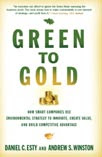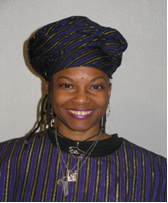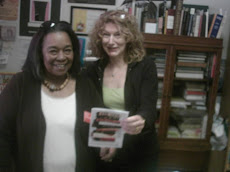Wednesday, April 30, 2008
++Reminder: May is National Bike Month
Posted by
GSS SET Central
at
4/30/2008 03:04:00 PM
0
comments
![]()
![]()
LEADERS SPEAK OUT ON DEVELOPMENT ISSUES
http://www.wbcsd.org/Plugins/DocSearch/details.asp?DocTypeId=35&ObjectId=Mjk2Mzk
Posted by
GSS SET Central
at
4/30/2008 12:32:00 PM
0
comments
![]()
![]()
Wednesday, April 23, 2008
Grow Your Own Treehouse and other thoughts on Ecological Architecture
Dr. Mitchell Joachim will be a presenter for Building Open Opportunity
Structures Together on Satuday, June 7, 2008 for the launch of Green, Smart,
and Sustainable Stakeholder Education and Training (GSS-SET) at Classics
Used and Rare Books located at 117 in downtown Trenton, New Jersey. Mitch will be joined by Anastasia Harrison - AIA, LEED, IAQI - for a presentation on practical steps for improving indoor air quality for homes and family health. For more information, please click here.
The Fab Tree Hab -- a home literally made from trees, using an ancient technique called pleaching (the art of weaving (and sometimes grafting) trees together to form structures) -- was one of the design entries for the Index: awards, emerging from the genius of a crew including MIT architect Mitchell Joachim and our friend, Javier Arbona of Archinect. The project description emphasized consideration of whole systems (and ecosystems) in creating a truly sustainable built environment, rather than a piecemeal approach that could yield uncertain longterm outcomes.
Although many individual and collective efforts towards “sustainable” or “green design” of buildings are apparent internationally, derivative design cannot address the underlying systemic nature of sustainability. Fixing pieces of a puzzle fails to address the interplaying complexities of the whole, and innovation is stifled by the need to work within given contexts.
Pleaching is not exactly garden variety as building strategies go, but it's certainly among the most ornate, natural, and "green." German landscape architect, Rudolf Doernach, used pleaching and other techniques in what he broadly called "biotecture" or "agritecture." Like permaculture, these methods are set up to be largely self-sustaining, meaning that once the initial planting and early training of the branches is complete, the structures continue to grow on their own, requiring minimal external energy while providing maximum agricultural yield (as in the Fab Tree Hab, which is meant to provide food for the inhabitants). Permaculture is also about inclusion, accessibility, and mutual service between humans and the natural world. With proper knowledge, you should be able to grow your own house.
As the Australian Rainforest Information Centre points out, these are the ultimate in low-cost, low-maintenance, zero-energy home:
Doernach's creations produce incredible savings compared to inert construction/insulation materials and have great potential for employment, given that say, 10 million homes have 100,000 hectares of plantable surface suitable for food cultivation. Insulation, energy-savings, noise-reduction, dust suppression, carbon dioxide conversion, oxygen production and psychological benefits are all positive by-products of planted walls.
Other ecological designers exploring the self-growing treehouse include Richard Reames and Konstantin Kirsch of the Treedome project, who've designed latticeworks of tree branches and grown them into cylindrical, multi-room dwellings which become fully-enclosed botanical domes. Fruit and other foods grow on the roof and walls, and the waste generated by the inhabitants becomes nourishment for the structure (a closed-loop system in which, as Bill McDonough says, waste=food).
Irish Architect, Urban Planner, Permaculture Designer and Ecologist, Declan Kennedy, presented a paper and lecture for the 1996 International Permaculture Conference in Australia on "designing for a sustainable future," which includes excellent history and analysis about the evolution of ecological architecture.
If, until the mid-90s, planners were satisfied with achieving an optimal combination of outside and self-generated supply and disposal with water, energy and the necessary materials, current innovation aims higher still: zero-energy buildings are well on the way to becoming "mega-out." What we are aiming at now are buildings that produce more energy than they consume - that is really designing for sustainability. Water-saving technologies should make way for self-contained water cycles, or failing that, wastewater-free buildings which produce compost and "industrial water," and green spaces that produce fresh food without requiring much input - thus becoming edible parks. The emphasis is not so much on self-sufficiency as on sustainable husbandry, orienting one's production and consumption on the carrying capacity of the land.
If energy, water, wastewater and refuse disposal rates continue to climb as they have over the past few years, every project which manages to lower running costs will become increasingly economically attractive in the future. "Non-ecological living" will become more expensive, be it food, cars or buildings. The motto is "using together instead of consuming individually." A real opportunity for the way ahead lies in the plummeting costs of information technology and in direct links between groups with similar goals through global communication networks. These options will allow us not only to exchange information more cheaply and quickly, but also help us locate the right car, bicycle or building at the right time, in the right place and at the right price.
And this is the crux of modern ecological architecture. Rather than referencing a time before computer-generated building plans, industrial mass production, and smart home technology, ecological architecture can now embrace these advancements while staying true to a whole-systems approach to design. By placing as much value on the services nature offers as those bestowed upon us by high-tech software and gadgetry, we optimize our design palette and gain utmost variation, flexibility, and sustainability for the future of the built environment. Product service systems and digitally networked communities thus become a part of the picture of a whole-systems lifestyle.
Most of us don't live in houses built from trees; they generally reside in our ideas of elven fairy tales or back-to-nature die-hards. But one look at the Fab Tree Hab model makes it clear that there is an ecological architecture for the 21st century and beyond - one that draws on the intelligence of ancient practices, uses the tools of today, and looks forward toward the challenges and possibilities that lie ahead.
--------------------- End of Article -----------------------------------
Dr. Mitchell Joachim of Terreform to make presentation on sustainable architecture for BOOST's GSS-SET 2008-09 Launches: Saturday, June 7th at Classics Used and Rare Books from 12 noon until 2pm. For more information, visit www.gss-set.blogspot.com. Dr. Joachim, feature below, will also be joined by Anastasia Harrison from WESKetch Architecture, Inc. Anastasia is a licensed and LEED certified architect and one of the first indoor air quality certified professionals in the state and will share "Greening for Family Health: Improving Indoor Air Quality" with forum attendees .
Posted by
GSS SET Central
at
4/23/2008 01:06:00 PM
0
comments
![]()
![]()
Wednesday, April 16, 2008
Leadership in Public Affairs
SUMMIT ON RESPONSES TO GLOBAL WARMINGThis is the link to the registration page for the Public Issues Summit on Responses to Global Warming. The summit will be held on Tuesday, April 29, 2008, 6:30 to 9:30 p.m., at The College of New Jersey. Contact information is being collected only for the purposes of reserving you a place at the forum and in case of schedule changes, it will not be shared with anyone. Please visit http://publicleaders.tcnj.edu/ for full details and contact Dr. William Ball at ball@tcnj.edu or call 609-771-2747.
Special thanks to Winnie Fatton, Executive Assistant for the Municipal Land Use Center (MLUC) at the College of New Jersey for her assistance in keeping us up-to-date on timely, relevant, reliable, and well structured events, programs, and opportunities for emerging individuals and organizations. A true community builder.... Thanks Winnie!
Announcement courtesy Building Open Opportunity Structures Together (BOOST) in preparation for our launch of Green, Smart, and Sustainable Stakeholder Education and Training (GSS-SET 2008-09). See GSS-SET details at http://gss-set.blogspot.com/2008/04/mitchell-joachim-to-speak-in-trenton.html.
Posted by
GSS SET Central
at
4/16/2008 10:09:00 PM
0
comments
![]()
![]()
Friday, April 11, 2008
Mitchell Joachim to teach in Trenton Saturday, June 7 for BOOST's GSS-SET Launch
Dr. Joachim, feature below, will also be joined by Anastasia Harrison from WESKetch Architecture, Inc. Anastasia is a licensed and LEED certified architect and one of the first indoor air quality certified professionals in the state and will share "Greening for Family Health: Improving Indoor Air Quality" with forum attendees. Multiple soft floating micro-island gyms on waterway paths. Energy is derived from human motion and converted to usable electric energy stored in on-board batteries.
Multiple soft floating micro-island gyms on waterway paths. Energy is derived from human motion and converted to usable electric energy stored in on-board batteries.
Building Open Opportunity Structures Together (BOOST) will launch their 2008-09 Green, Smart, and Sustainable Stakeholder Education and Training series of public awareness forums and community capacity building workshops from 11am noon until 4pm on Saturday, June 7 at Classics Used and Rare Books located at 117 South Warren Street. This event is free to the public and will feature a screening of Sundance "Big Ideas for a Small Planet, the Build" episode and a special appearance by Mitchell Joachim, principal with Terreform, a nonprofit philanthropic architectural design collaborative that integrates ecological principles in the urban environment. The GSS-SET launch will coincide with Classics Book Fair and Trenton's 30th annual Heritage Days Celebration.
Mitchell Joachim insists that his plans are not futuristic. As the Executive Director for Terreform, a “philanthropic design collective,” he is responsible for progressive solutions for current problems. Save for the overt reliance on CGI imagery, the plans he presented at Postopolis! seem robustly conditional on collective goodwill, but still grounded on hard statistics and grounded feasibilities. In the video above, he outlines his company’s plans in three main areas: the city, ecology, and mobility.
The City
Urban settings pose all sorts of problems for professionals who work with infrastructure, but even more so for those who are environmentally conscious. One of the biggest problems, argues Joachim, is circuity. Because cars have no intelligence and “will drive off a cliff and take you with it,” they spend a whole lot of time not knowing where they’re going, looking for parking, and being stuck in traffic. These preventable problems will be responsible for 60% of the entire energy usage in the United States by 2050.
Joachim sees the solution in intelligence.
The key is designing automobiles so the entire car is in the wheel, linked to other wheels on a municipal grid. In this model, the city is composed of interconnected networks.
Ecology
After explaining the obscene energy usage in the life cycle of a house, from chopping down trees using power tools to building remains dumped in landfills, Joachim brings back the idea of the living tree house.
Alongside MIT architects Laura Greden and Javier Arbona, Joachim presents their proposal for the Fab Tree Hab.
The proposed construction materials are organic, and we don’t mean metaphorically. The materials really are alive. Ficus, a parasitic plant that is soft during growth but hardens when exposed to air, can be given a certain structure to grow around and within. It can become a wall. It is a parasitic wall, but if you give them a structure to grow into or around it will grow.
Mobility
While eco-warriors see automobiles as evil, Joachim takes a different approach. He sold his Honda years ago, but he doesn’t think that’s anywhere near enough. He is looking for redemption and — according to him — we should be too.
“Efficiency essentially means playing a piano with a two-by-four,” says Joachim. “You hit every key and, great, you did an efficient job… efficiency means the car is still doing some damage… If you get it down to zero emissions, you’re not doing anything bad, but you’re not doing anything good.”
Enter his Concept Car, developed with GM and Frank O. Gehry.
These cars are SOFT (Sustainable Omni Flow Transport), soft (so soft in fact, that they “look like hug-and-kiss lamb cars”) and ecological. They move in herds. They are powered by the human buttocks. And they’re not the first of their kind. Not entirely, anyways.
In the 1920’s, Henry Ford extensively experimented with alternative materials for car manufacturing. Because he believed the booming automobile industry and American’s agricultural economy were “natural partners”, he sought to amicably unite them.
This is how he became a proponent of the soybean.
Ford used plastic made from soy meal to manufacture everything from glove box doors and accelerator pedals to steering wheel and dashboard panels. Even the entire body of the car could be (and was) made from soy-based plastic. The Model T’s paint and plastic parts, in fact, contained 60 pounds of soybeans.
It was a car just as durable, lighter, and more reasonable economically and environmentally. But then war broke out. After World War II, the petrochemical industry experienced a boom and the soy-based plastic car fell into oblivion.
Until now. The ailing Ford Motor Company, in partnership with the Lear Corporation, sends a nod in the direction of history with the launch of a new car. The seat backs and cushions of the 2008 Ford Mustang are made with soy-based foam.
Posted by
GSS SET Central
at
4/11/2008 06:04:00 AM
2
comments
![]()
![]()
Wednesday, April 9, 2008
Cash Flow Games BOOST Trenton's Downtown - SUCCESS LINKS LLC Seeks to Highlight Downtown Brightspot, Promote Financial Literacy

CASH FLOW GAMES - Hosted by Phyllis Holly-Ward for SUCCESS LINKS, LLC
Building Open Opportunity Structures Together is pleased to be able to promote a project that will bring people, organizations, and businesses together, as Phyllis Holly-Ward says, "It's important for us to see each others work in addition to know how we can learn from each other, if we are going to work together. In addition the sessions are a unique and fun way to learn about business and finances."
CASH FLOW GAMES hosted by SUCCESS LINKS, LLC are held on Saturday mornings at various locations. The game was created by multimillionaire Robert Kiyosaki to help people learn how to get rich. The games take place in a networking environment of game players and game watchers - all filled with the excitement of learning the rules of how the rich get rich by saving, investing and buying real estate and businesses.
CASH FLOW GAMES will be held in Downtown Trenton, NJ on Saturdays, April 5th, 12th 19th and 26th from 10am to 1pm - doors open @ 9:30am
LOCATION: Gilmore’s Café - lower level, 118 N. Warren Street,
ENTRY FEE: $10 pp (includes entry as game player or watcher, game instruction, networking and light refreshments)
Seating is limited-Entry is on a first come, first reserve basis Walk-ins are welcome * Reservations are preferred * Advance payments are a guarantee. To reserve a date to attend – contact the game host:
SUCCESS LINKS, LLC
Workshop, Event Planning & Success Coaching
“Our goal is to help you achieve success”
Phone (609) 695-9455 or Email-phollyward@successlinksllc.com
Posted by
GSS SET Central
at
4/09/2008 09:55:00 AM
0
comments
![]()
![]()
Wednesday, April 2, 2008
EE Week 2008: Two Weeks Until EE Week!
Green Events for April 2008:
April 16 – 17Positive Business 2008 EventA huge range of products and services, from cutting-edge technology to bio-fuel fleet operators, carbon footprint measurement to alternative travel and fair trade supplies to recycling equipment will be brought together under one roof. The Positive Business Show Forum which consists of seminars, keynote presentations, workshops and interactive events will keep visitors up to date with the latest thinking.Olympia Two, Earls Court, London, United Kingdom
April 16 – 18Living Future 2008:From Living Buildings to Living CommunitiesLiving Future is the Cascadia Region Green Building Council’s annual event focused on cutting-edge green design solutions. This year, industry professionals and students will learn more about Cascadia’s – the largest chapter of the Canada and U.S. Green Building Council – Living Building Challenge and the importance of creating truly sustainable communities. The keynote speaker is Paul Hawken, world-renowned environmentalist, entrepreneur, journalist, and author of Blessed Unrest.The Westin Bayshore Hotel, Vancouver, B.C. Canada
April 22EARTH DAY
April 22 – 23B4E – Business for the Environment Global SummitThe Summit will focus on the global economic and financial impact environmental concerns in the areas of resource efficiencies, renewable energies, new business models and climate strategies. Through high-level discussion, delegates will learn the best practices for identifying and managing the risks posed by climate change, and explore practical solutions that are available today for enterprises to adopt greener corporate practices that make solid business sense and are a source of competitive advantage. The Summit is sponsored by the United Nations Environment Programme (UNEP) and the United Nations Global Compact.Singapore
April 22 – 26Ecocity World Summit:The 7th International Ecocity ConferenceThe Summit will focus on key actions cities and citizens can take to rebuild our human habitat in balance with living systems, and, in the process, slow down and even reverse global heating, biodiversity collapse, loss of wilderness habitat, agricultural lands and open space and social and environmental injustices. Bottom line: We want to unite people around a new way of living on the planet that provides the best possible cities for people to live in without destroying the biosphere.The International Ecocity Conferences address: ecological city design, governance and social justice, green architecture and urban layout, streetcars, trains and bicycles, renewable energy, restoration of natural ecologies and agricultural lands, recycling, pollution abatement and business incentives.San Francisco, CA
National Environmental Education Week is just two weeks away, and we are proud to announce that over 1,300 schools, nature centers, zoos, museums, aquariums, and parks have committed to hosting EE Week lessons and activities. Access promotional materials
EE Week Nature Journaling Blog
If you are looking for outdoor activities for your students, consider utilizing EE Week's new online Nature Journaling Blog. Built with the expertise of the Roger Tory Peterson Institute of Natural History, the blog offers weekly tips on ways to introduce nature journaling and observation to students. Access the Nature Journal Blog
EE Week Photo Blog Contest
Plans are once again in the works to host a Photo Contest for EE Week 2008, but this year educators will be invited to upload their photos in an online EE Week Photo Blog. These "EE Week Bloggers" will be invited to share their success stories and photos of their own environmental education efforts, and will be eligible for prizes such as digital cameras, camcorders, and photo printers. The EE Week Photo Blog will be launched during EE Week--stay tuned for details!
As you finalize your plans for National Environmental Education Week activities, we hope you will consider adding your EE Week events to the "No Child Left Inside Days" project. "No Child Left Inside Days" is designed to highlight the benefits of environmental education to school administrators, parents and community leaders.
Learn More
There is still time to register for EE Week! Registration is free at www.EEWeek.org/register.htm
Sincerely,
Karen Schultz
National Environmental Education Week Coordinator
Posted by
GSS SET Central
at
4/02/2008 02:22:00 PM
0
comments
![]()
![]()



































